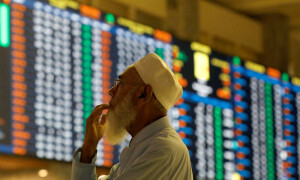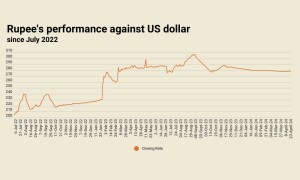World Drug Report 2022 launched: Minister urges stakeholders to help create drug-free nation
ISLAMABAD: The tendency of drugs among youth is pacing up and required firm attention of the stakeholders to purge the young generation from its menace, said Minister for Narcotics Control Shahzain Bugti.
“I urge all stakeholders to remain steadfast to create a drug-free nation. I call upon the international community to put an end to the demand and supply of drugs”, said the minister while addressing at the launch of the World Drug Report 2022 organised by the United Nations Office on Drugs and Crime (UNODC).
The report highlighted the trends on cannabis, environmental impacts of illicit drugs and its use among women and youth.
The minister stressed the need to expand drug treatment services to achieve a drug-free society for all. Each year this day reminds the policymakers to express resolve a drug-free status not for our country but for the entire world, he added.
He commended the role of the Anti-Narcotics Force (ANF) as it conducted operations all over the country in tackling the menace of drugs. The report highlighted the early indications and effects of cannabis legalization, continued growth in drug production and trafficking, key drug trends broken down by region, conflict zones as magnets for synthetic drug production, the environmental impacts of drug markets, ongoing gender treatment gap and disparities in drug use and treatment etc.
Federal Secretary Humaira Ahmed said that the report mapped out the regional and global situation pertaining to drug production, transportation, and usage of illicit drugs. It has been highlighted in this report that around 90 percent of heroin is produced in one of our neighbouring countries, she said.
She said as per this report, there were three different routes for transportation of these illicit drugs. “For Pakistan, it has been elaborated that the extent of seizures has doubled during 2019-2021. This reflects positively on the effective command and control system put in place by the ministry and its force which is spread all over the country. We reckon it as a substantive improvement in this very difficult area where the stakes are extremely high, finances with people on other side of the fence are innumerable and resources are unparalleled”.
She said cannabis remained the world’s most used drug. Cannabis legalisation in parts of the world appears to have accelerated daily use and related health impacts, according to the report. According to the report, around 284 million people aged 15-64 used drugs worldwide in 2020, a 26 percent increase over the previous decade. Young people are using more drugs, with use levels today in many countries higher than with the previous generation. In Africa and Latin America, people under 35 represent the majority of people being treated for drug use disorders.
Globally, the report estimates that 11.2 million people worldwide were injecting drugs. Around half of this number were living with hepatitis C, 1.4 million were living with HIV, and 1.2 million were living with both.
Cocaine manufacture was at a record high in 2020, growing 11 percent from 2019 to 1,982 tons. Cocaine seizures also increased, despite the Covid-19 pandemic, to a record 1,424 tons in 2020. Nearly 90 percent of cocaine seized globally in 2021 was trafficked in containers and/or by sea. Seizure data suggested that cocaine trafficking is expanding to other regions outside the main markets of North America and Europe, with increased levels of trafficking to Africa and Asia.
Opium production worldwide grew seven percent between 2020 and 2021 to 7,930 tons – predominantly due to an increase in production in Afghanistan. However, the global area under opium poppy cultivation fell by 16 percent to 246,800 in the same period.
The report noted that in Pakistan, young people who use drugs moved to readily available substances such as painkillers. A survey among drug professionals in the Middle East and North Africa and neighbouring countries found reductions in services aimed at preventing drug-related infections and deaths (e.g. in Pakistan) in 2020.
There were significant changes in 2020. Seizures of heroin and morphine increased significantly in countries neighbouring Afghanistan, notably in the Islamic Republic of Iran and Pakistan, but declined in the Balkan countries and in destination countries in Western and Central Europe, it added.
The principal immediate outlet for opiates produced in Afghanistan seems to be Pakistan, with seizures reported there accounting for close to 29 percent of all heroin and morphine seized globally in 2020. Some seizures were destined for domestic consumption, some for trafficking to the Islamic Republic of Iran and beyond, and some for trafficking along the southern route to either South Asia (four percent of global seizures), notably India, or to eastern Africa (one percent).
The Islamic Republic of Iran, Pakistan and Central Asia already suffer from high rates of opiate prevalence and are exposed to what are possibly the largest quantities of opiates trafficked worldwide, the report noted.
Copyright Business Recorder, 2022























Comments
Comments are closed.